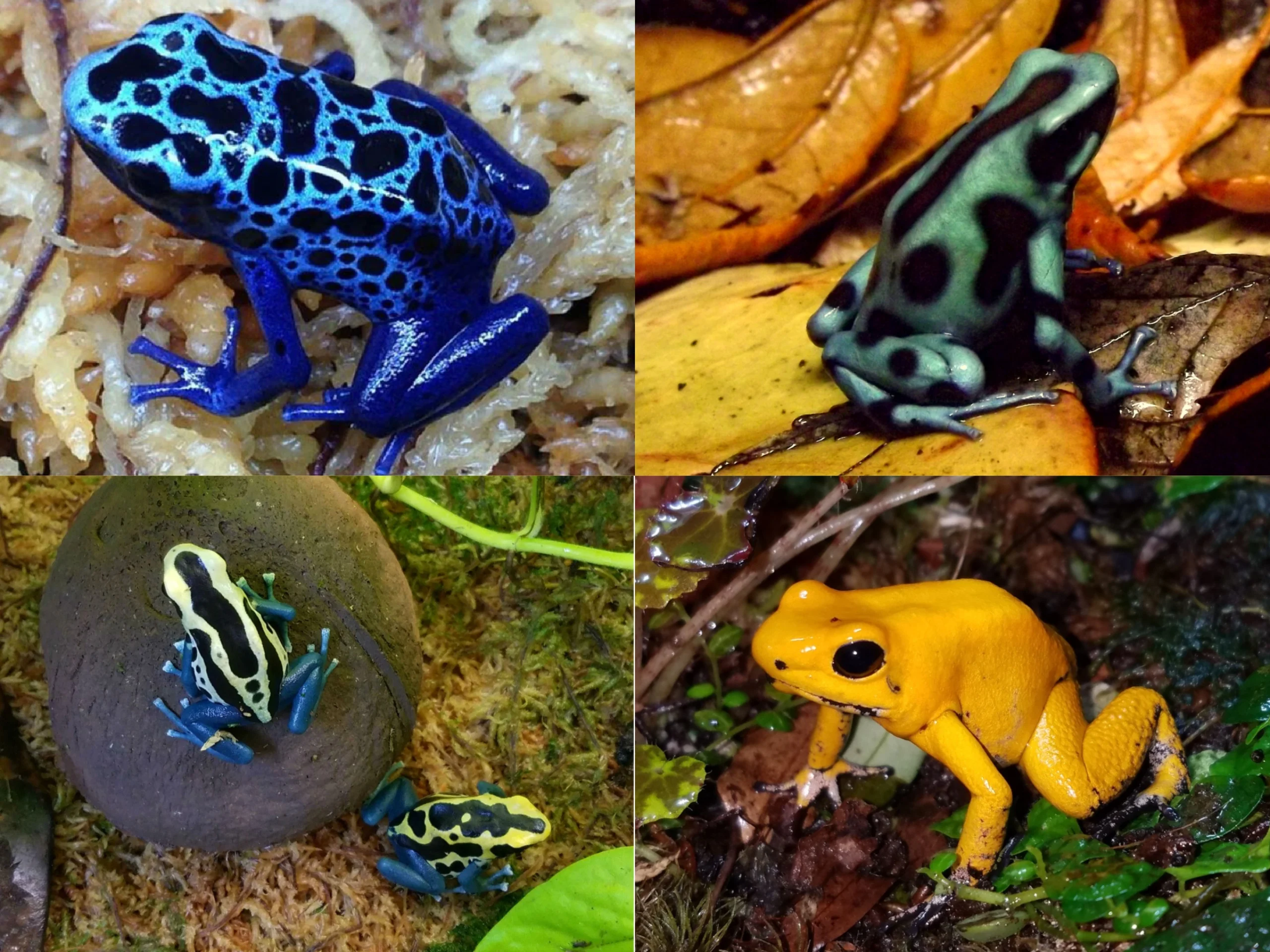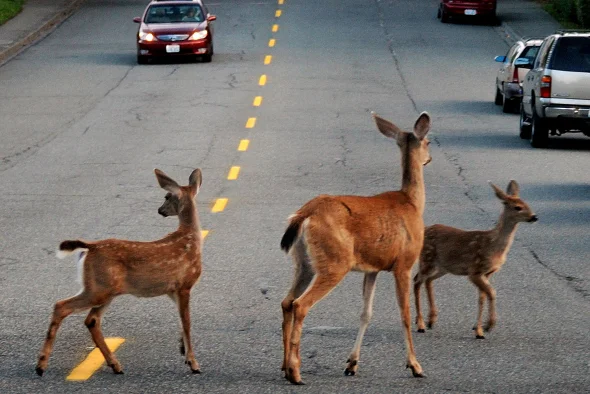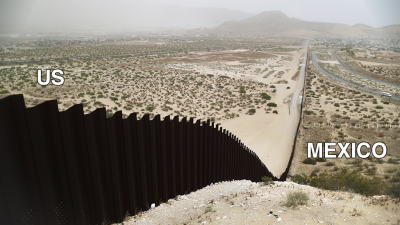What does the brightly colored skin of some frogs signal to their predators?

Have you ever wondered about the vibrant colours of some frogs? Did you know that their colouring is a warning to predators that they are foul-tasting and poisonous? Read on to know more fascinating facts about these amphibians.
It is small enough to fit into the palm of one's hand, but it packs a powerful punch. A single golden poison dart frog, measuring just 6 on long, contains sufficient poison to kill 10 grown humans! The frog species derives its name from the centuries-old practice of the Emberá and Chocó, indigenous peoples of Colombia and Panama, who tipped their blowgun darts with its poison while hunting.
The poison is called a batrachotoxin (some beetles and birds also have it). The word batrachos is Greek for frog'. Even minute amounts lead to paralysis and death.
Poisonous species
There are only four species of frogs that are so poisonous that even a tiny drop is enough to kill small mammals (monkeys, for example) and birds. Most of them produce poison only potent enough to kill insects-flies, crickets, ants, termites. and beetles which are their main prey.
The frogs average around 2.5 cm in length. They are found in the wild only in the tropical rainforests of South and Central America.
The frogs sport gaudy colours and patterns, usually in combination with black-orange, red, blue, yellow, purple, pink, green, and even silver! Their colouring is a warning to predators that they are foul-tasting and poisonous. Once a predator has tried eating one and survived, it avoids similar-looking frogs.
The fire-bellied snake of the Amazon forests is resistant to golden poison frog toxin and is its only predator.
The little frogs usually live in the leaf litter on the forest floor, near streams and ponds, but a few species also live high up in the canopy and may never come down. Unlike most frog species that are nocturnal, poison frogs are active during the day when their colours can be best seen.
Caring for the young
Females lay from one to 30 eggs at a time in a dark, moist place such as the base of a big leaf, the hollow of a tree trunk or crook of a branch. Both parents are involved in the care of the eggs. When the eggs hatch, the parents carry the tadpoles on their backs and deposit them in water. Blue poison frog tadpoles eat their own siblings, so the parents must find a different water body for each individual hatchling!
The female feeds the tadpoles with unfertilized eggs that contain small amounts of poison, so that even the tadpoles are protected from predation.
Researchers are studying poison frogs to see if their toxins can be used in medicines, mainly painkillers. The poison from the phantasmal poison frog has been found to be 200 times more effective than morphine and without its side-effects!
Fact File
- Wild poison frogs ingest the poison from the different bugs they eat and store it in their skin. Frogs bred in captivity lose their toxicity.
- In the past decade, hundreds of frogs have died of a fungus that grows on their skin, preventing them from absorbing oxygen and water.
- The population of the more brilliantly coloured poison frogs has plummeted because they are popular as pets.
Picture Credit : Google

